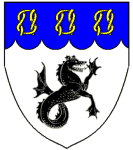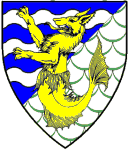| View previous topic :: View next topic |
| Author |
Message |
BrentB
Joined: 15 Jul 2006
Posts: 4420
City/Region: Greenwood
State or Province: IN
Photos: BrentB
|
 Posted: Sun Aug 30, 2009 6:47 pm Post subject: replacing battery wing nuts with nylok nuts Posted: Sun Aug 30, 2009 6:47 pm Post subject: replacing battery wing nuts with nylok nuts |
 |
|
I am replacing the wing nuts with nylocks and lock washers. Interesting while shopping and looking at new batteries and some had them. Was it mandated to battery makers to change over?
_________________
Brent Barrett |
|
| Back to top |
|
 |
mcc272
Joined: 05 Jun 2008
Posts: 233
City/Region: Long Island Sound
State or Province: CT
C-Dory Year: 2004
C-Dory Model: 22 Cruiser
Vessel Name: C-Star
Photos: C-Star
|
 Posted: Sun Aug 30, 2009 7:38 pm Post subject: Posted: Sun Aug 30, 2009 7:38 pm Post subject: |
 |
|
I have always heard that Nyloc nuts should not be used in electrical systems and that conventional nuts and lock washers were prefered. I don't know where I picked this up but the theory is that the nylon insert in the nut insulates the nut from the post. The objective is the best electrical connection between the lug and the post. The issue is how much of the circumference of the hole in the lug connects with the post. If there is a marginal connection between the lug and the post, perhaps due to a lug with an oversized hole, the flat of a conventional nut pressed tightly against the lug carries current through the nut and its threads helping to establish a good electrical connection to the post. A Nyloc nut does not improve the electrical connection.
There are others on the site such as Joe (Seawolf) and Dr. Bob who have much greater electrical backgrounds than I do. I would be interested in their thoughts on this subject.
As to wing nuts, I believe that the theory is that you can more properly torque a hex nut than a wing nut and, as a result, there is a lower chance of the hex nut loosening.
_________________
Jim
Connecticut Side of LI Sound
C-Star, 2004 22 Cruiser (sold 10/10)
North Star, 2011 Rosborough RF-246 |
|
| Back to top |
|
 |
Captains Cat
Joined: 03 Nov 2003
Posts: 7313
City/Region: Cod Creek>Potomac River>Chesapeake Bay
State or Province: VA
C-Dory Year: 2005
C-Dory Model: 22 Cruiser
Vessel Name: Captain's Choice II
Photos: Captain's Cat
|
 Posted: Sun Aug 30, 2009 8:37 pm Post subject: Posted: Sun Aug 30, 2009 8:37 pm Post subject: |
 |
|
I concur with Jim. I think we've all jumpstarted a car or something in our lifetimes and put the jumper cables on the battery. You need a big conductive thing for the clamps to affix to and a nut with a nylon insert isn't it. You can get plenty of holding power with a flat washer, a lock washer and a tightened up hex nut. I don't use wingnuts (although I may have been accused of being one at some point in my lifetime!  ) )
Charlie
_________________
CHARLIE and PENNY CBRAT #100
Captain's Cat II 2005 22 Cruiser
Thataway (2006 TC255 - Sold Aug 2013)
Captain's Cat (2006 TC255 - Sold January 2012)
Captain's Kitten (1995 CD 16 Angler- Sold June 2010)
Captain's Choice (1994 CD 22 Cruiser- Sold Jun 2007)
Potomac River/Chesapeake Bay
K4KBA |
|
| Back to top |
|
 |
thataway
Joined: 02 Nov 2003
Posts: 21357
City/Region: Pensacola
State or Province: FL
C-Dory Year: 2007
C-Dory Model: 25 Cruiser
Vessel Name: thataway
Photos: Thataway
|
 Posted: Sun Aug 30, 2009 8:44 pm Post subject: Posted: Sun Aug 30, 2009 8:44 pm Post subject: |
 |
|
Flat washers, lock washer, and then a standard nut. Nylox can melt under the heat at a terminal. [/u]
_________________
Bob Austin
Thataway
Thataway (Ex Seaweed) 2007 25 C Dory May 2018 to Oct. 2021
Thisaway 2006 22' CDory November 2011 to May 2018
Caracal 18 140 Suzuki 2007 to present
Thataway TomCat 255 150 Suzukis June 2006 thru August 2011
C Pelican; 1992, 22 Cruiser, 2002 thru 2006
Frequent Sea; 2003 C D 25, 2007 thru 2009
KA6PKB
Home port: Pensacola FL |
|
| Back to top |
|
 |
Fairbro
Joined: 02 Nov 2003
Posts: 313
City/Region: Prescott
State or Province: WI
C-Dory Year: 2001
C-Dory Model: 22 Cruiser
Vessel Name: Minnie Swann
Photos: Minnie Swann
|
 Posted: Sun Aug 30, 2009 10:00 pm Post subject: Posted: Sun Aug 30, 2009 10:00 pm Post subject: |
 |
|
As I have preached before I preach again. Coming home a couple of nights ago I noticed my tach on the starboard motor dropped to zero and then picked up again when I moved the throttle. Having experienced this problem before to the tune of several hundred dollars, to replace my charging coil, I immediately removed all of my ground battery cables, emory clothed them, dielectric greased them, and re-tightend the wing nuts with a pliers. No problem so far after 6 more hours. Whether wing nut or regular nut: Clean them and tighten them without mercy to prevent costly repairs. A bouncing or dead tach is the first sign of a loose battery ground in an outboard motor and the precurser to expensive repair!
_________________
Gary & Gerrie former Minnie Swann owners
It's something in the water! |
|
| Back to top |
|
 |
Sea Wolf
Joined: 01 Nov 2003
Posts: 8650
City/Region: Redding
State or Province: CA
C-Dory Year: 1987
C-Dory Model: 22 Cruiser
Vessel Name: Sea Wolf
Photos: Sea Wolf
|
 Posted: Mon Aug 31, 2009 12:39 am Post subject: Posted: Mon Aug 31, 2009 12:39 am Post subject: |
 |
|
As far as this wing-nut knows, all the advice is right on so far!
If you're really concerned with a high amperage connection, like on the starter circuit for a diesel motor, use copper nuts, washers, and lock nuts.
Don't forget the dielectric grease in any case, as the washers and nuts will be particularly prone to corrosion around battery acid vapors and also being "charged" by the battery's voltage.
Joe.  
_________________
Sea Wolf, C-Brat #31
Lake Shasta, California
  
"Most of my money I spent on boats and women. The rest I squandered'. " -Annonymous |
|
| Back to top |
|
 |
Almas Only
Joined: 09 Nov 2003
Posts: 364
City/Region: Richmond
State or Province: VA
C-Dory Year: 2003
C-Dory Model: 22 Cruiser
Vessel Name: Alma's Only
Photos: Alma's Only
|
 Posted: Mon Aug 31, 2009 7:57 am Post subject: Posted: Mon Aug 31, 2009 7:57 am Post subject: |
 |
|
I use nylok nuts, and would appreciate any reference to an authoritive source which has documented instances of the nylon melting, and allowing otherwise tightened nuts to come loose.
It seems to me that you would have to be dealing with a major electrical fault before generating enough heat at the post to melt nylon, and in that case, tightness of your connection at the battery would be the least of your worries. This is particularly so given the fact that the nylon does not contribute materially to the tightness of the nut, but only to keeping it in place should it otherwise tend to vibrate loose. All the work in a properly tightened nut (believe the standard is 10 ft. pounds) is done by the first one or two threads, which in this application, are stainless steel.
I'm all for bombproofing, but am curious to know if discarding nylok nuts is overkill.
_________________
2003 CD22 Cruiser with Honda 90 |
|
| Back to top |
|
 |
Levitation
Joined: 09 Aug 2009
Posts: 289
City/Region: Hemlock
State or Province: MI
C-Dory Year: 2009
C-Dory Model: R-25 Tug
Vessel Name: CHARLOTTE ANN
|
 Posted: Mon Aug 31, 2009 8:15 am Post subject: Posted: Mon Aug 31, 2009 8:15 am Post subject: |
 |
|
I spent much of my wasted youth maintaining industrial plants... No plastic fastener for high current battery cables would be accepted in that industry...
The problem is not whether the plastic nut is an insulator - that is immaterial... It is that plastics will creep under load and elevated temps, giving up a little tension, causing the connection to increase resistance slightly, making the connection run hotter, and so on in a vicious circle...
_________________
denny-o |
|
| Back to top |
|
 |
Rick from Maine
Joined: 02 Nov 2003
Posts: 310
City/Region: No. Berwick
State or Province: ME
C-Dory Year: 2000
C-Dory Model: 22 Cruiser
Vessel Name: Hunky Dory
Photos: Hunky Dory
|
 Posted: Mon Aug 31, 2009 8:30 am Post subject: Posted: Mon Aug 31, 2009 8:30 am Post subject: |
 |
|
I think that Nylok Nuts are the right way to go for the following reasons:
1. The electrical connection is independent of the nut in that the conductive surfaces are the flat faces of the battery terminal and wire lugs. The nut compresses/clamps those faces together to ensure resistance free conduction. The type of nut, whether wing nut or self locking, has no influence on the clamping force of the mating electrical parts.
2. The Nylok element is not a structural part of the nut and joint and has no influence on the electrical connection. It only provides resistance to turning so that the nut won’t vibrate loose. Once properly tightened, the Nylok nut will stay tight. This may not be true with wing nuts, or wing nuts combined with locknuts if there are washers in the joint.
For what it's worth, Rick from Maine |
|
| Back to top |
|
 |
Nunya
Joined: 22 Jun 2008
Posts: 99
State or Province: AK
C-Dory Year: 2007
C-Dory Model: 25 Cruiser
Photos: Nunya
|
 Posted: Mon Aug 31, 2009 9:53 am Post subject: Posted: Mon Aug 31, 2009 9:53 am Post subject: |
 |
|
| I switched over to nylocs years ago. Use a flat washer underneath and have never had a problem. Most of my boating buddies have done the same. I had issues with wing nuts getting loose. |
|
| Back to top |
|
 |
AstoriaDave
Joined: 31 Oct 2005
Posts: 994
City/Region: Astoria
State or Province: OR
|
 Posted: Mon Aug 31, 2009 9:59 am Post subject: Posted: Mon Aug 31, 2009 9:59 am Post subject: |
 |
|
Listen carefully to Levitation.
A short in the circuit (major electrical fault) is not required to get a hot spot at the battery/cable connection. It is the locally high resistance of a loose connection that contributes to a local hot spot. Nylon need not melt to lose its effectiveness at ensuring the nut stays tight; it only must he warmed near its yield point.
Check out Nigel Calder's references on how to attach cables to battery terminals: compatible metal nut and lock washer, tightened so that they do not compress any plastic shrink tubing (which can also slowly migrate and loosen the connection).
_________________
Dave Kruger
Astoria, OR |
|
| Back to top |
|
 |
Matt Gurnsey
Dealer
Joined: 11 Nov 2008
Posts: 1532
City/Region: Port Orchard
State or Province: WA
Photos: Kitsap Marina
|
 Posted: Mon Aug 31, 2009 1:09 pm Post subject: Posted: Mon Aug 31, 2009 1:09 pm Post subject: |
 |
|
We throw away the wing nuts that come with the battereis we sell away, and use wahser, lock washer and nut.
_________________
Matt Gurnsey
Kitsap Marina
www.kitsapmarina.com
360-895-2193
(888) 293-7991 |
|
| Back to top |
|
 |
BrentB
Joined: 15 Jul 2006
Posts: 4420
City/Region: Greenwood
State or Province: IN
Photos: BrentB
|
 Posted: Mon Aug 31, 2009 4:57 pm Post subject: Posted: Mon Aug 31, 2009 4:57 pm Post subject: |
 |
|
thanks
Sometimes you feel like a nut
Sometimes you dont
Peter Paul Almond Joy's got nuts Mounds don't
Sometimes you dont use wingnuts
Sometimes you do |
|
| Back to top |
|
 |
DaveS
Joined: 01 Nov 2003
Posts: 3204
City/Region: Arlington
State or Province: WA
C-Dory Year: 2004
C-Dory Model: 22 Cruiser
Vessel Name: Sea Shift
Photos: Sea Shift
|
 Posted: Mon Aug 31, 2009 5:14 pm Post subject: Posted: Mon Aug 31, 2009 5:14 pm Post subject: |
 |
|
I've met a few wingnuts, don't much care for them..... 
(and Charlie, even though you claim that you may have been referred to as one in the past, I certainly don't believe that, because I've met you and you absolutely don't fall into that category!)
_________________
Dave S.
"Sea Shift"
C-Brat #16 |
|
| Back to top |
|
 |
thataway
Joined: 02 Nov 2003
Posts: 21357
City/Region: Pensacola
State or Province: FL
C-Dory Year: 2007
C-Dory Model: 25 Cruiser
Vessel Name: thataway
Photos: Thataway
|
 Posted: Mon Aug 31, 2009 6:27 pm Post subject: Posted: Mon Aug 31, 2009 6:27 pm Post subject: |
 |
|
The one case I saw where the nylon melted was in a diesel vessel, and an 8 D battery. Granted that this is not a C Dory, but the same conditions of corrosion can exist in our boats. The Nylon on the battery terminal is not to ABYC standards. Also remember that Nylon insert nuts are designed to be used only one time--then discarded and replaced.
If you use wing nuts, then tighten them appropiately with a wrench or pliers--just hand tight will not be adequate--and I also discard them, unless it is in a pinch and I don't have the appropiate size nuts. The reason for a washer, is that many times I find cables which have the end fittings with too big a hole for the posts (for example, although it used to be the standard of 3/8" and 5/16" posts--now one finds batteries with only 5/16" posts. Also often if you clamp down directly on the terminal, there is enouugh leverage to start the bolt unthreading, if there is no washer--no matter if you have torqued it properly (frankly I could not get any torque wrench I own into the battery compartment of any of my C Dories). |
|
| Back to top |
|
 |
|

 Search
Search Private Messages
Private Messages Profile
Profile Log in
Log in Register
Register Help
Help





